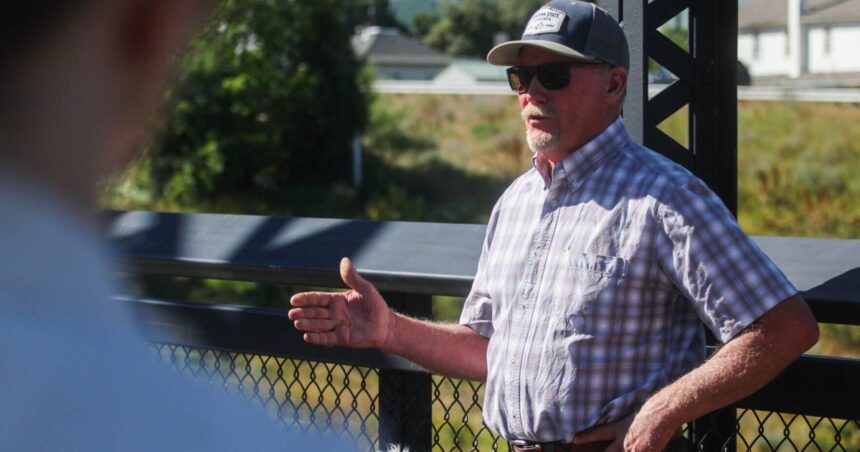Drought, much like farming, is a domino effect.
El Niño was predicted, but a drought to this extent wasn’t as clear in the cards. This summer, the Blackfoot River has experienced significant declines in water levels due to a mix of last winter’s minimal snowpack, recent dry conditions and high temperatures.
Kelsey Jencso, University of Montana professor of watershed hydrology and Montana state climatologist, reported that the Blackfoot River Valley is experiencing “record-setting low streamflow conditions” due to the ongoing drought.
Fly fishermen float down the Blackfoot River, in August 2020. The Blackfoot River Valley is now facing D-4 or “exceptional” drought, the highest level of severity.
“I think people that are in agriculture understand drought. They understand fire danger, they understand weather conditions,” rancher Danny Iverson said. “I wonder sometimes if the general population really understands the devastation caused by drought. In America, we just never run out of food.”
People are also reading…
Ultimately, ranchers have endured hot and dry seasons for a long time. But for Iverson and his family, who have cattle ranched in the Potomac for over 50 years, this is the worst in terms of stream flow and precipitation.
“It’s really, really stressful on farmers and ranchers,” Iverson said. “We don’t make a lot of money anyway, so when you get situations like this, it’s really stressful … it’s all compounding.”
The family has about a fifth of the water they typically do. Water from the Blackfoot River hasn’t provided enough to fill any water rights. In a good year, the water will typically run out in July and August.
Iverson made it clear that despite all the conditions thrown their way, the family was getting through the season well. It all boiled down to luck with soil and resources, as some neighbors haven’t fared as well due to weather and environmental factors.
“We haven’t seen a year this bad in a long time,” Iverson added. “You’re irrigating for next year, but when you get two years in a row like this, it can be devastating.”
Representatives from the University of Montana Climate Office and the Blackfoot Challenge met at the Milltown pedestrian bridge over the Blackfoot River on Wednesday morning for a news conference discussing the effects of severe water shortages and the critical need for water conservation.
This winter saw an unusually low snowpack, with the Blackfoot watershed receiving only 57% of its average snow moisture by April 1. The subsequent cool, moist spring weather did not provide enough relief either, Jencso said.
“We knew early on that things were going to be pretty bad this year,” Jencso said. “We expect these conditions will continue through this summer and into the winter … they’re becoming less and less predictable in terms of what we’d experienced in the past.”
The Blackfoot River Valley is now facing D-4 or “exceptional” drought, the highest level of severity, indicating extremely high fire risk, widespread pasture loss and severe crop damage. As of Friday, a small circle of D-4 conditions had spread across small parts of Missoula County, Powell County, Lewis and Clark County and Granite County.
The surrounding areas, including parts of the above counties and Ravalli, Deer Lodge, Silver Bow and Beaverhead counties, are also struggling with D-3 or “extreme” drought.
With droughts being monitored across the state, ranchers who get water from the Blackfoot River aren’t the only ones who have felt the weather’s impacts.
“Farming’s always been that way,” Neil Martin, who does ranching work in Stevensville, said. “It can take one thing, and it just affects everything.”
Most of the drought’s effects have been seen in pastures where their livestock is, and a combination of all the weather’s effects has dried up the area. Getting water from Burnt Fork Lake, Martin has about 10 days of water left.
This year, Martin only harvested half the usual amount of hay during the first cutting. The crop took a hard hit because a longer-lasting and heavier frost persisted until the end of June.
“It’s not a very profitable season,” Martin added. “You know, you only got half the product you normally sell. It means your income’s in half. It’s kind of hard.”






